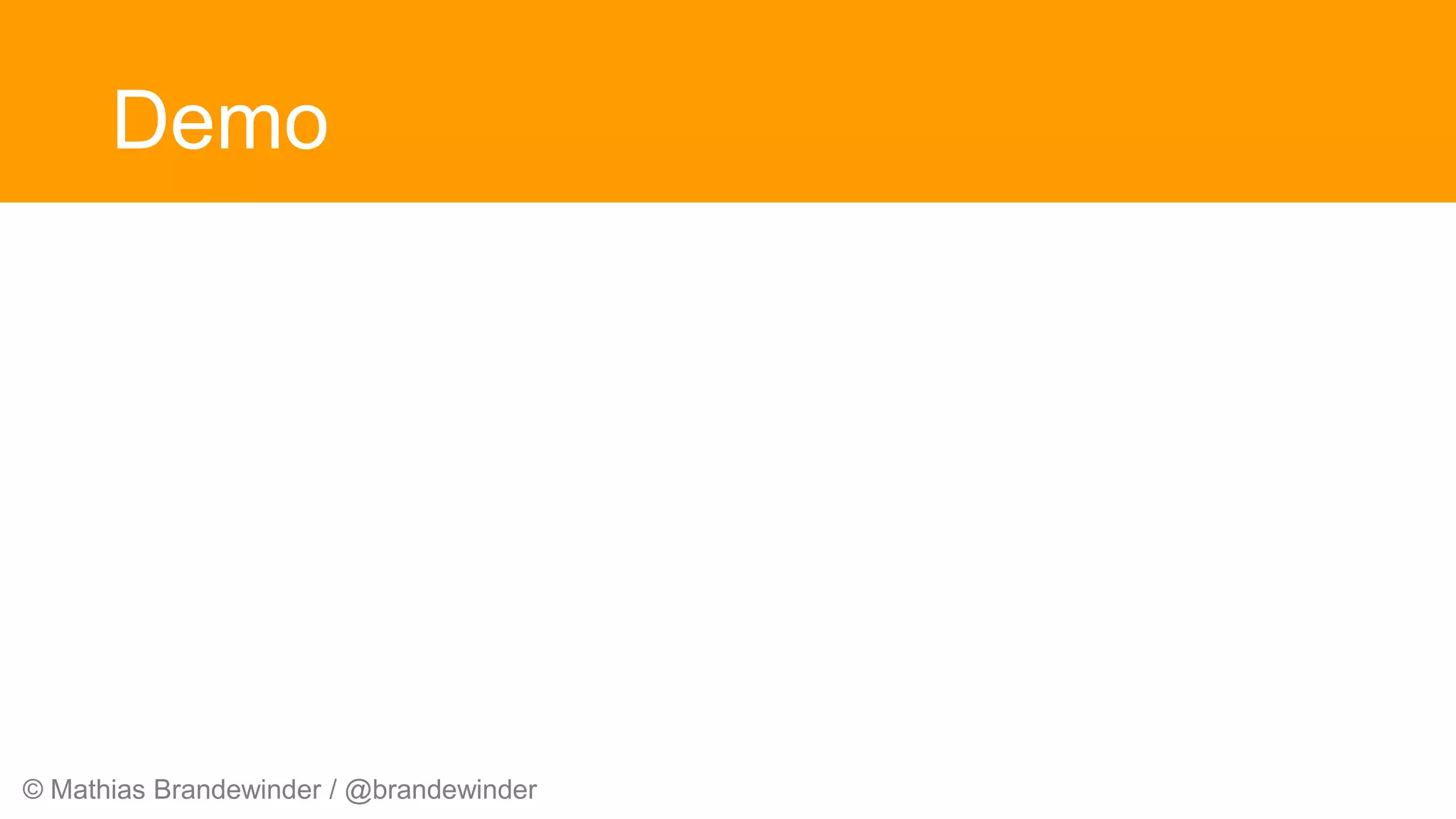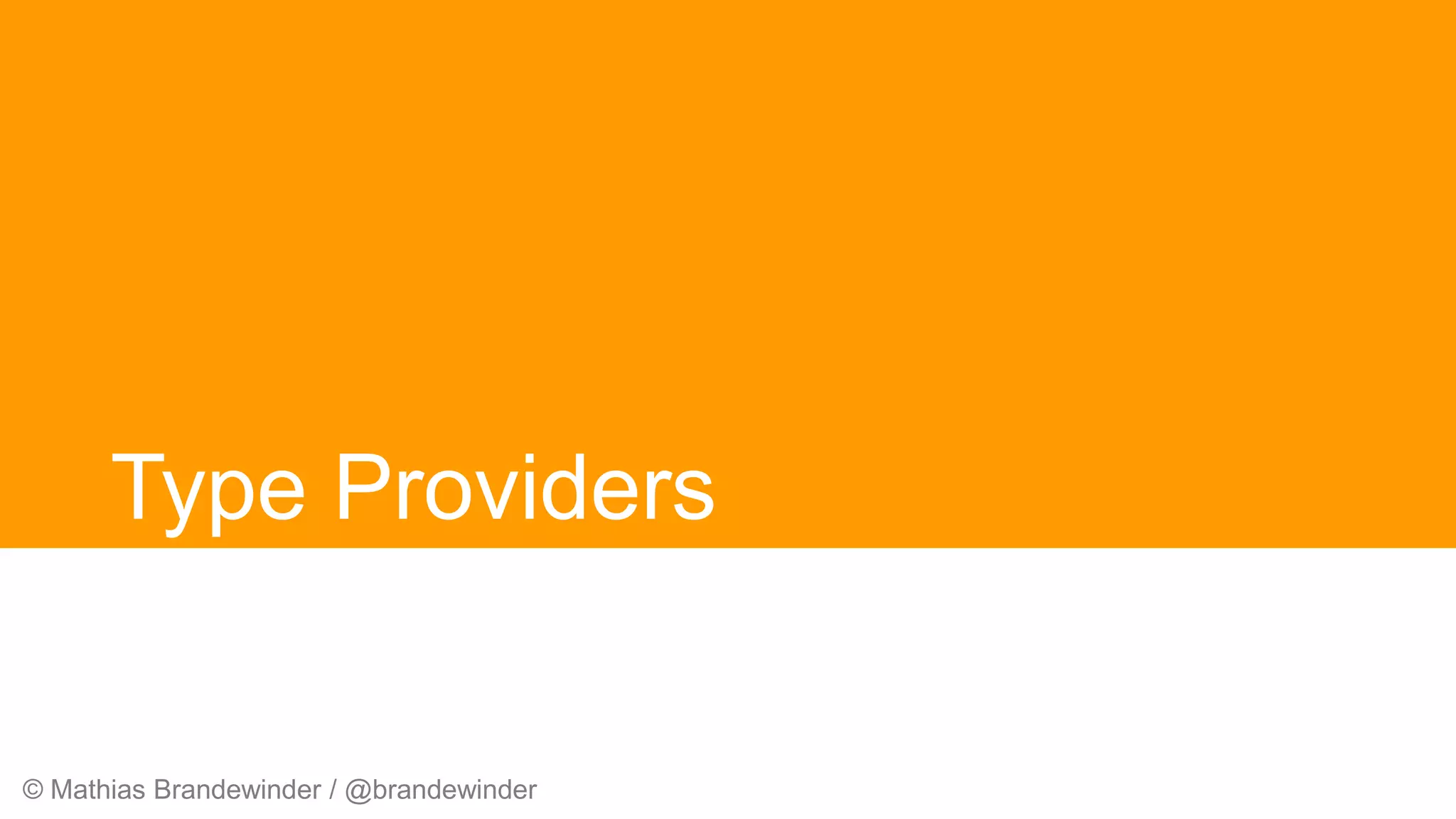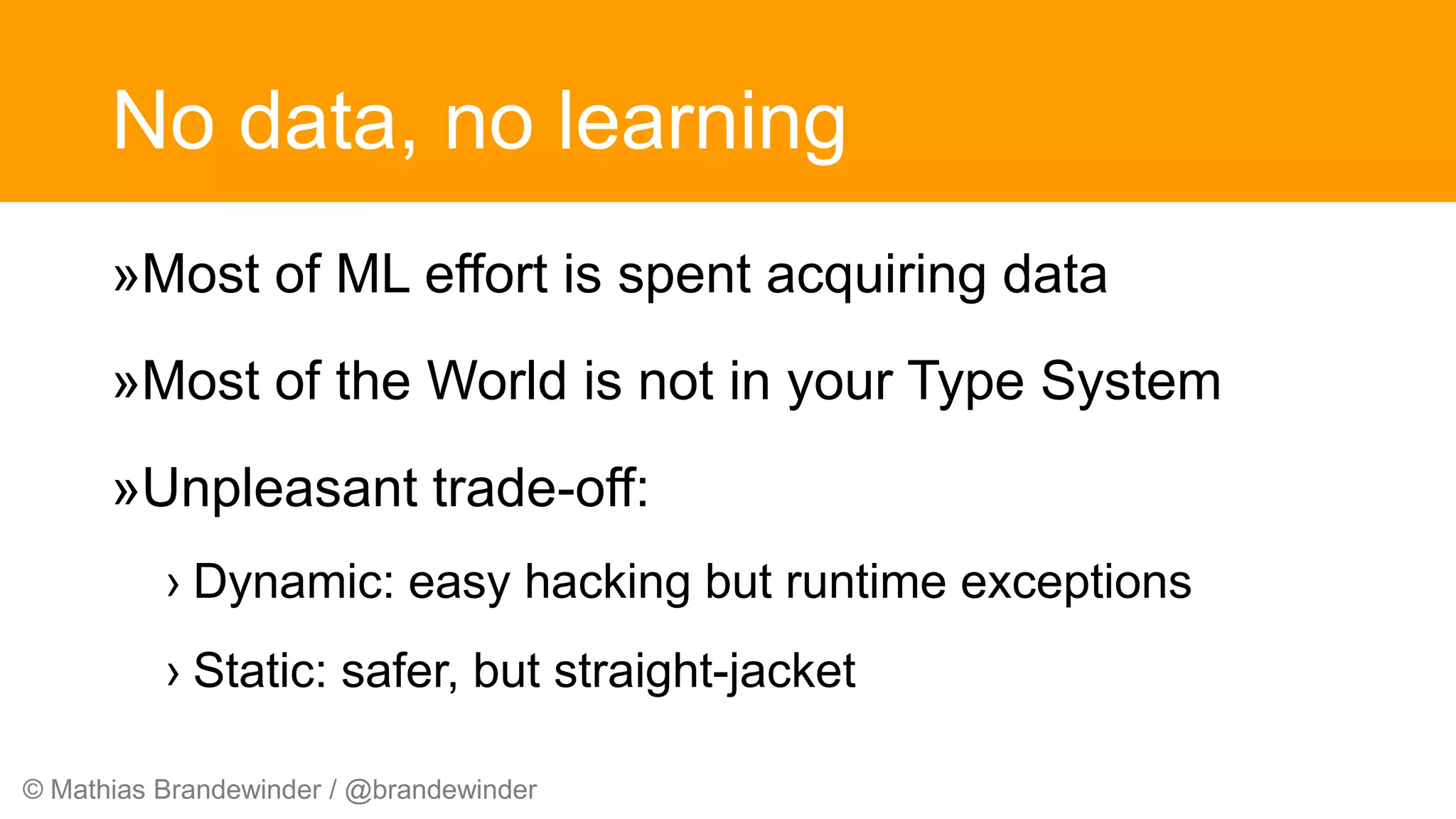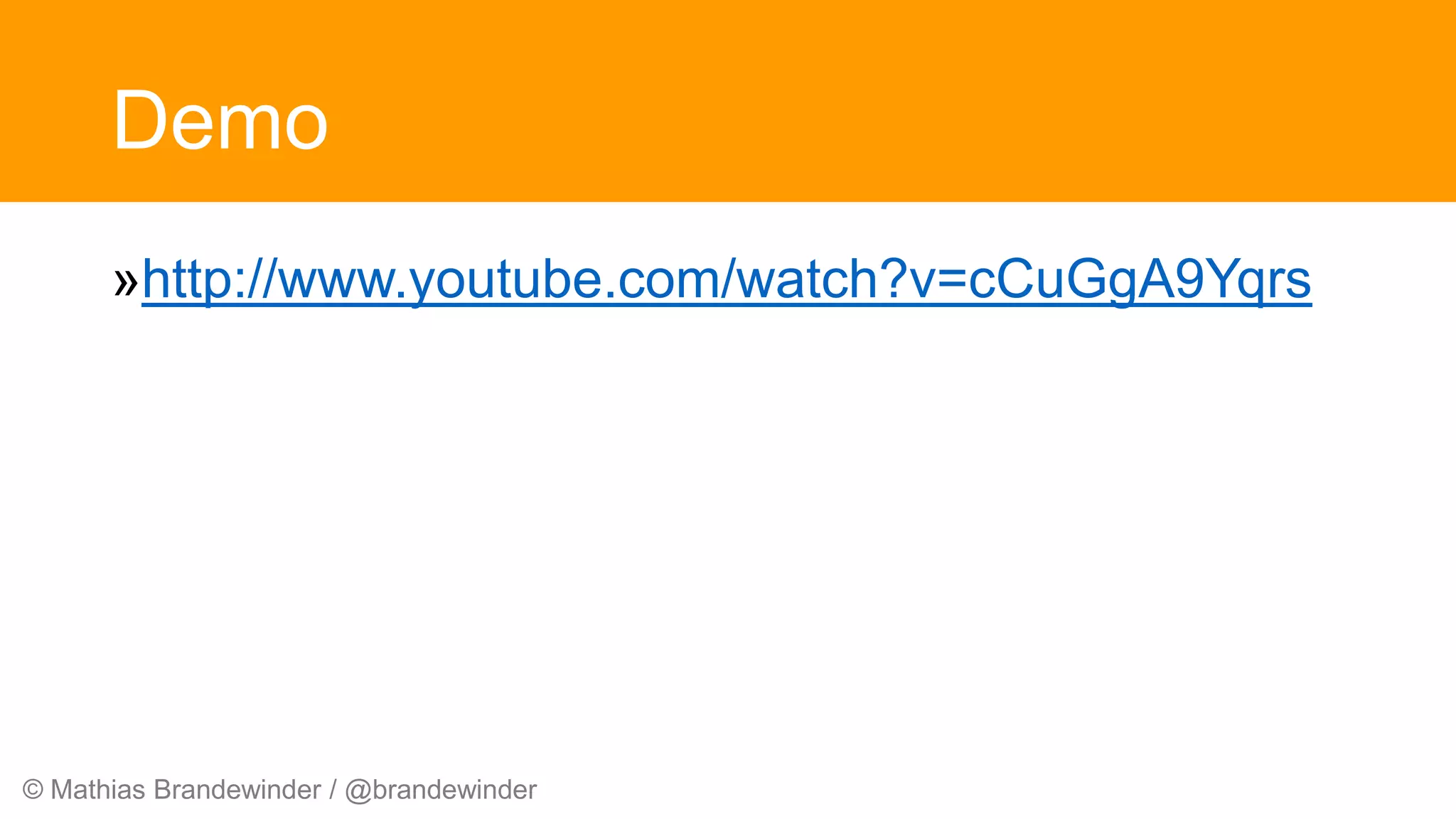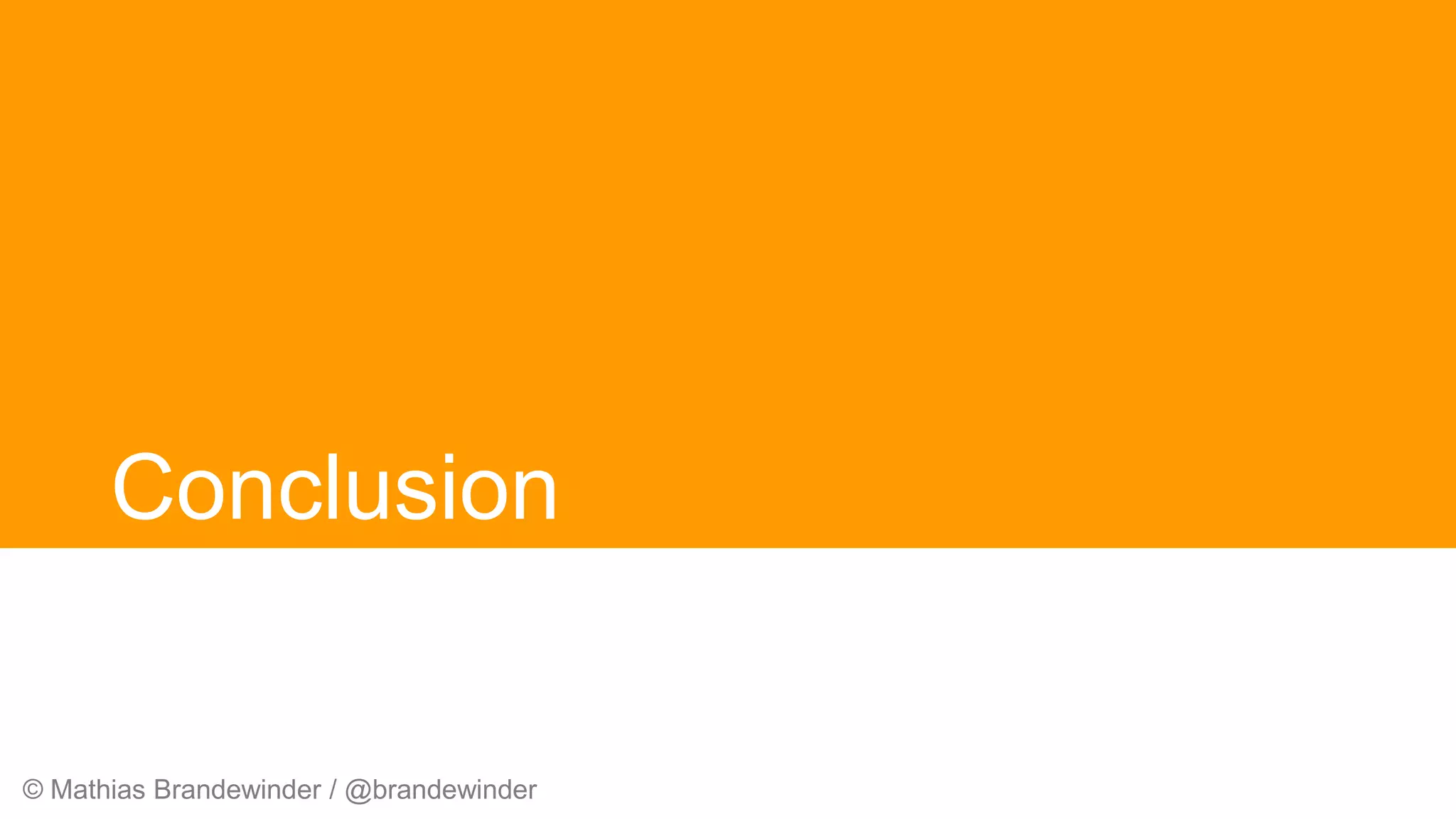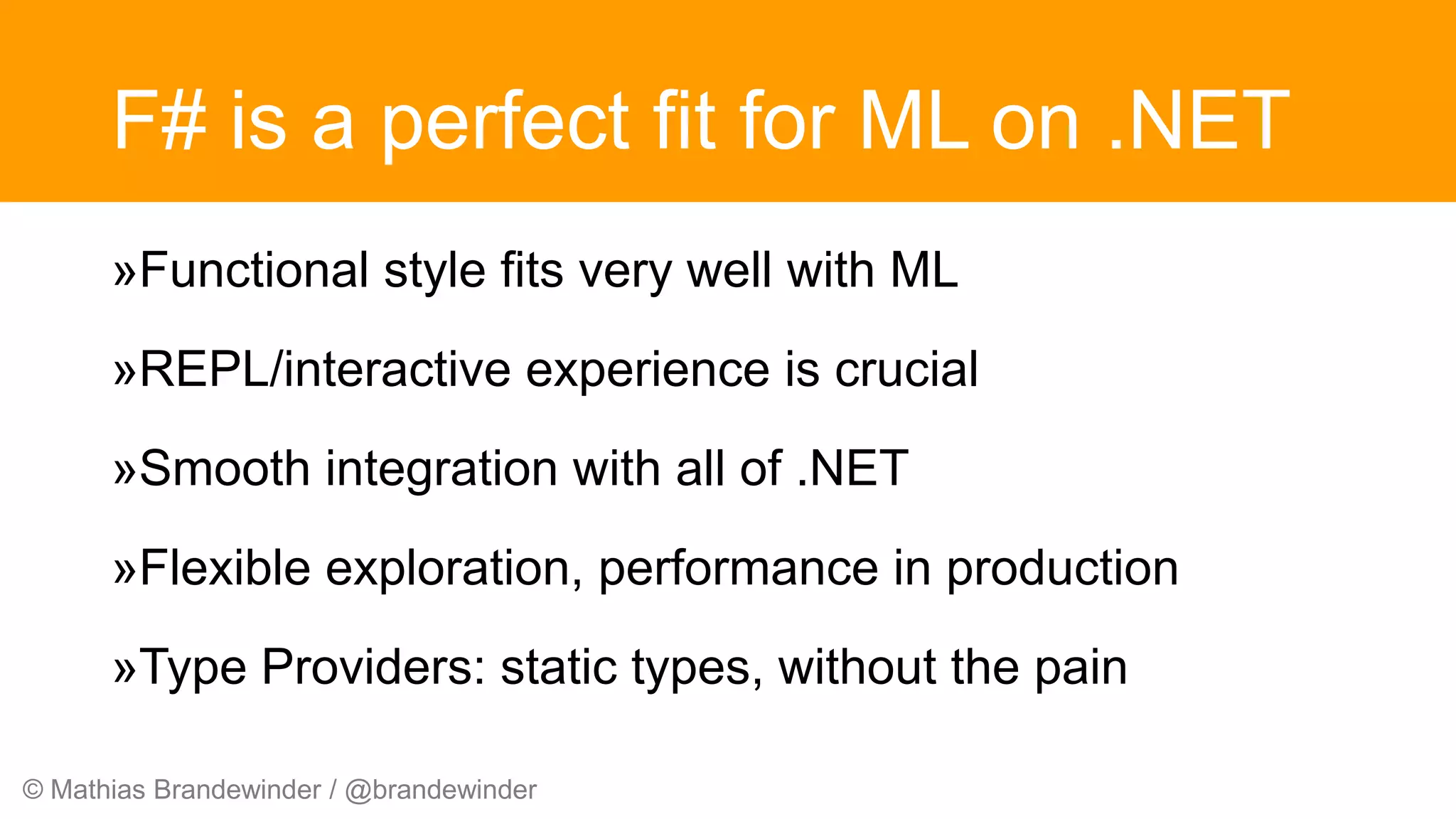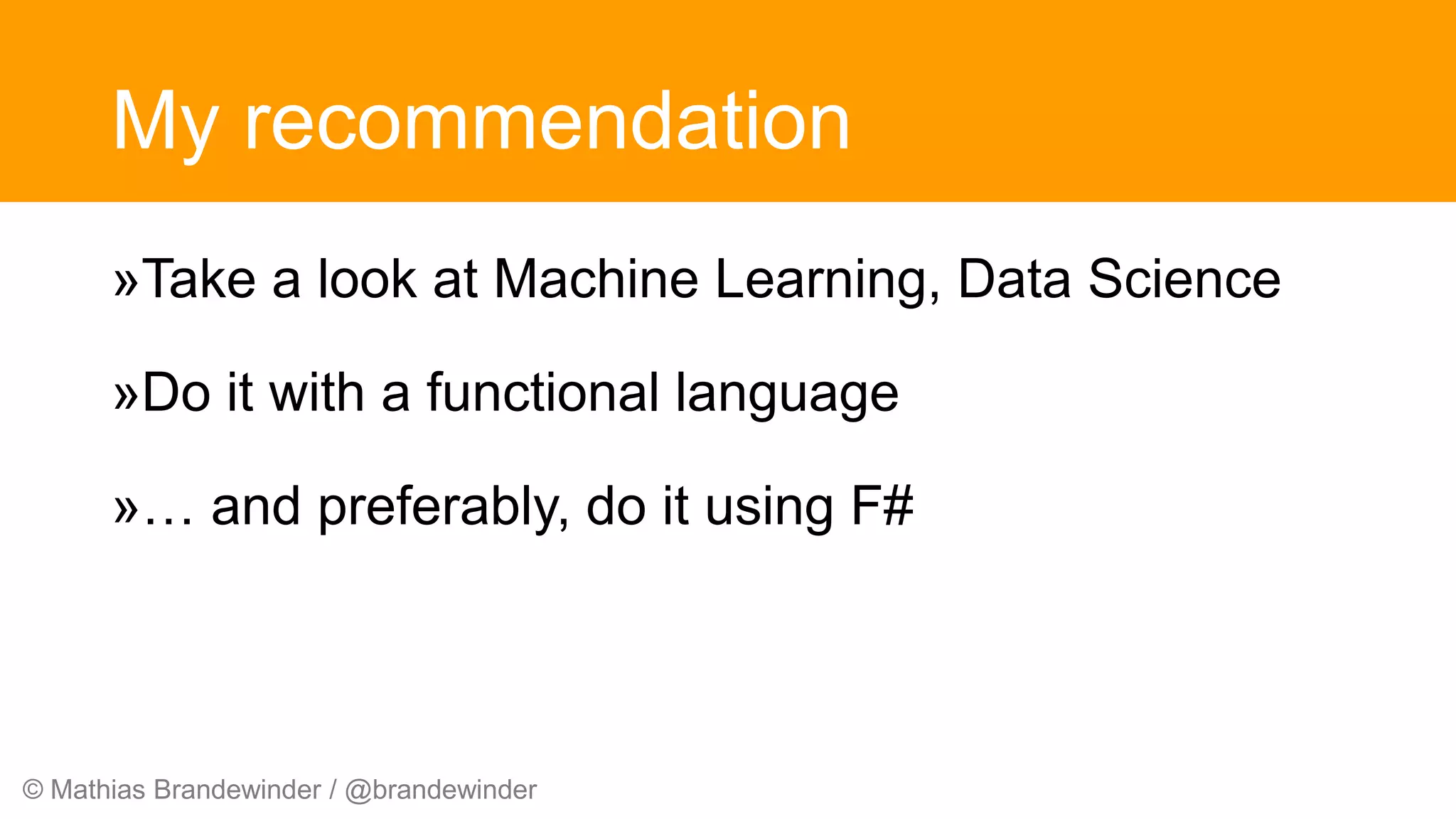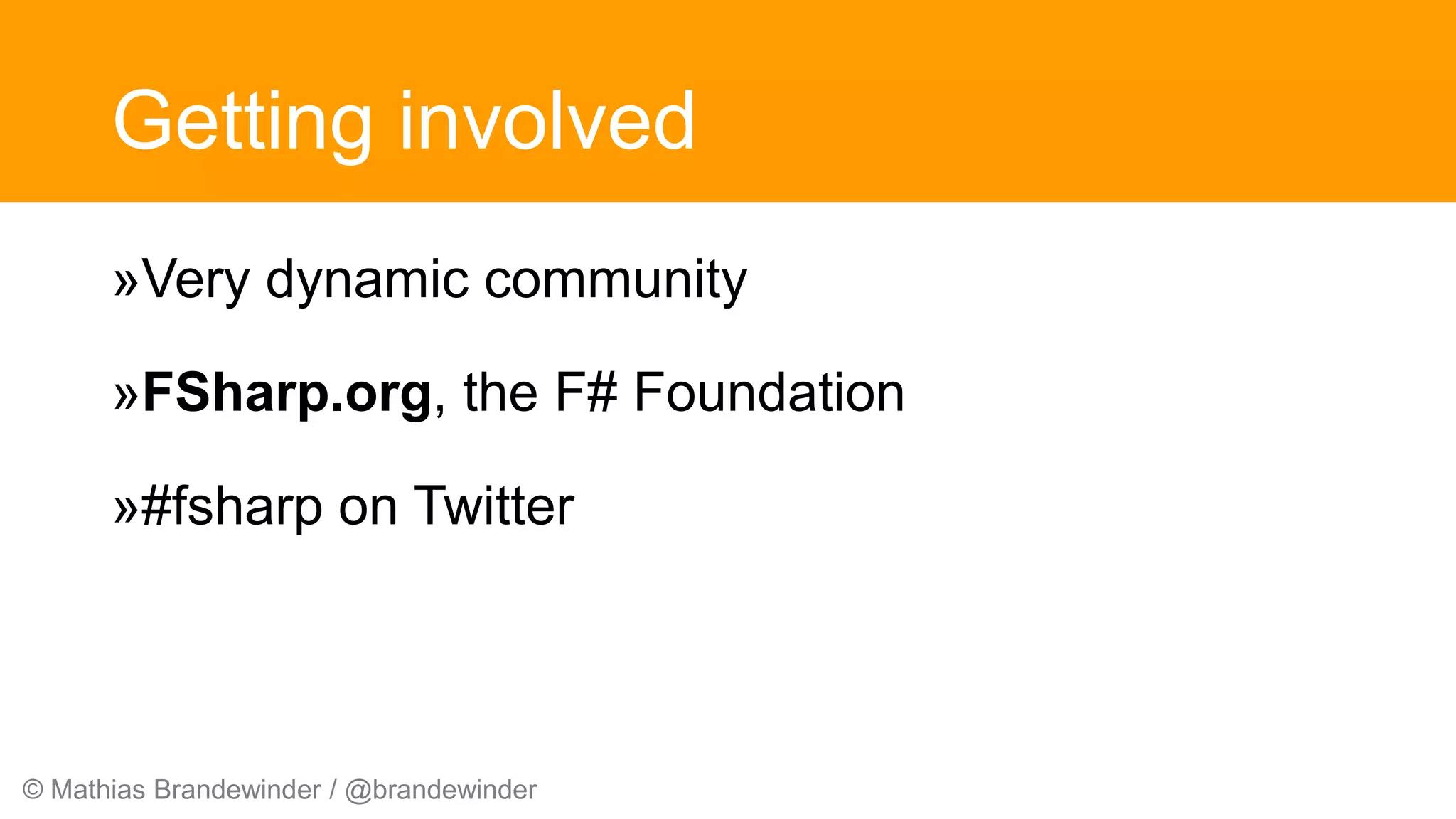This document summarizes a presentation about machine learning on .NET using F#. It discusses classification and regression using support vector machines and a Kaggle dataset. Unsupervised learning is demonstrated through a clustering example written functionally. Type providers are presented as a way to integrate dynamic data into a static type system. The document recommends F# as a good fit for machine learning due to its functional style and integration with .NET libraries.
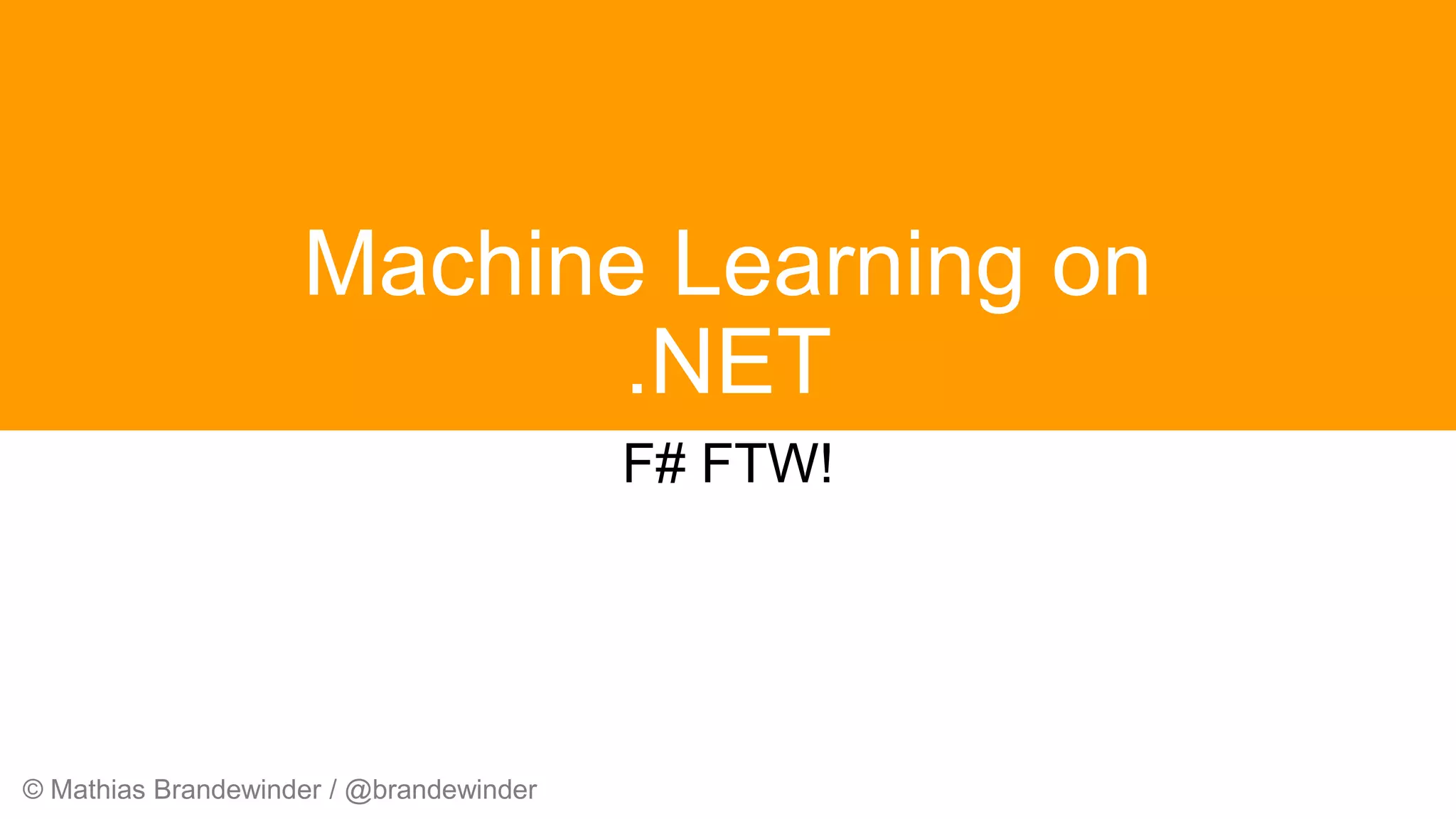
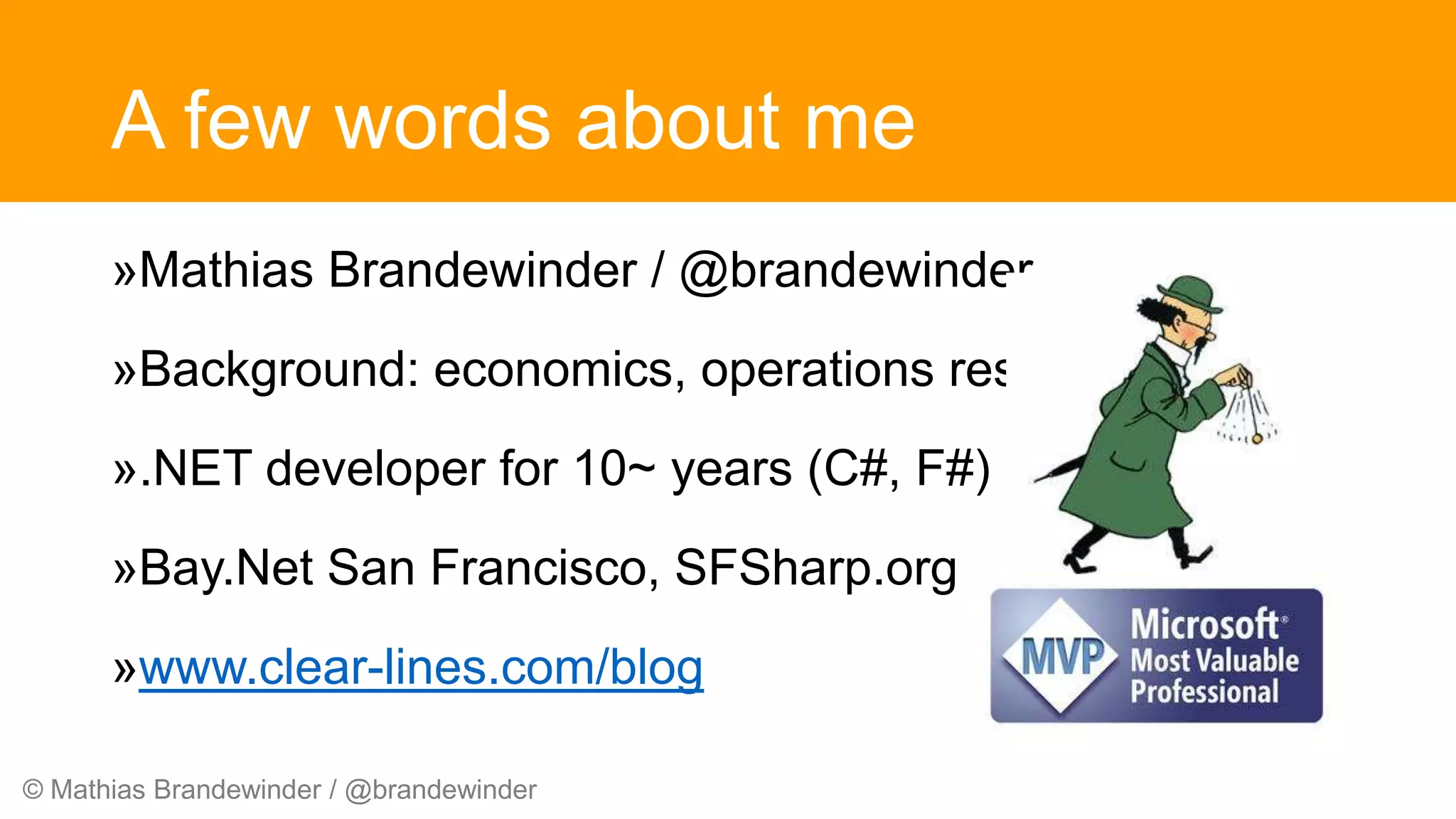
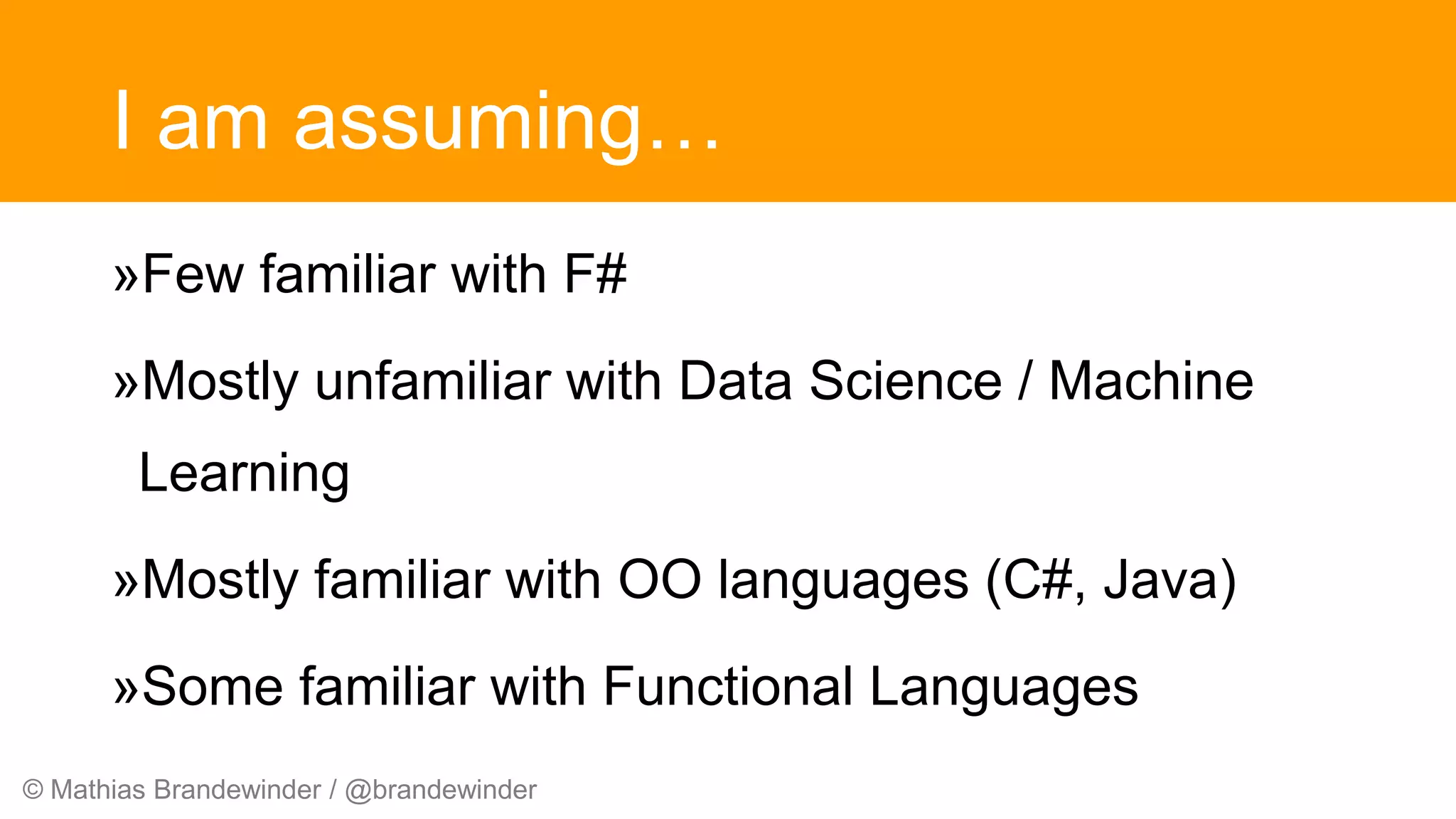
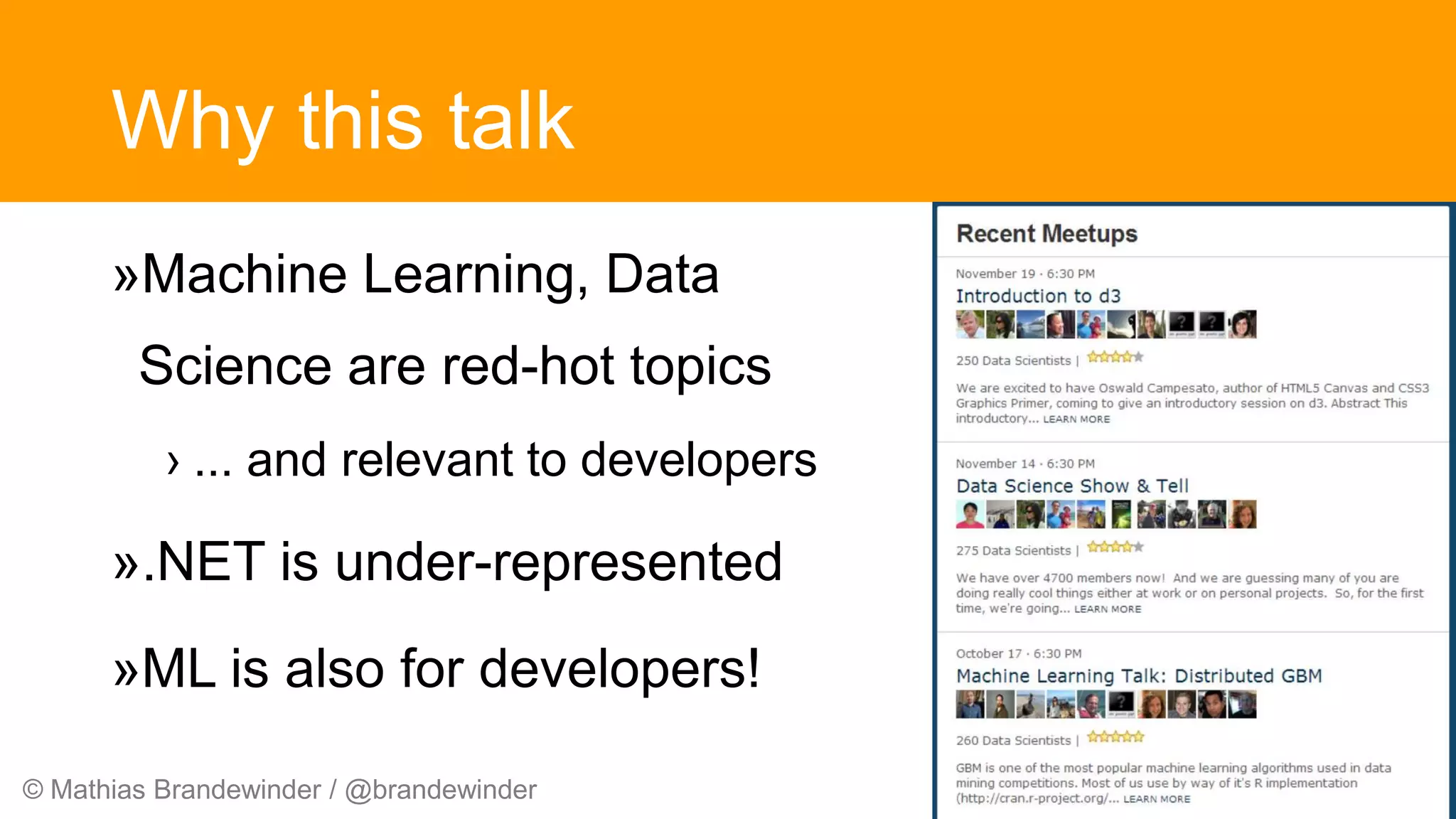
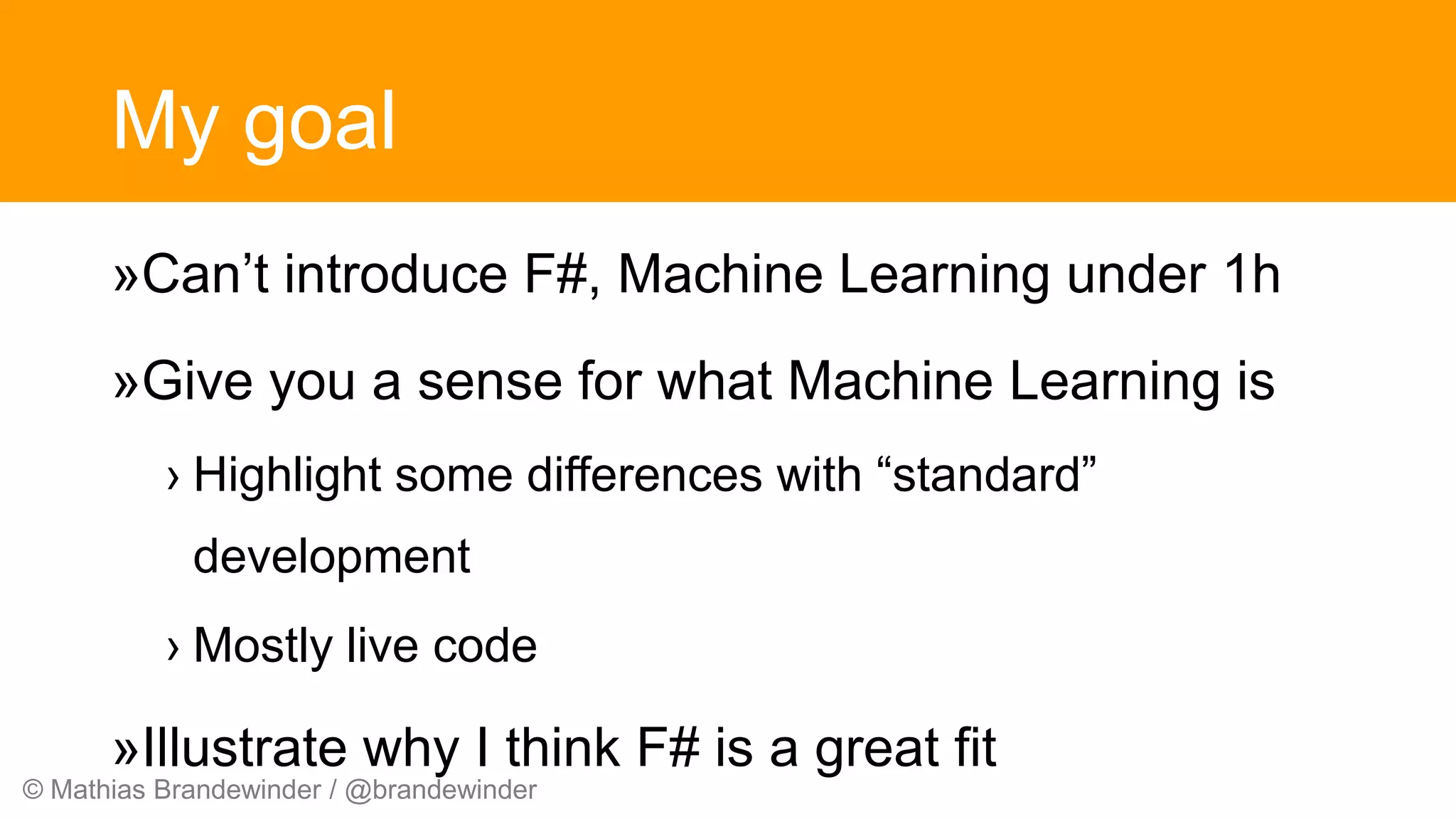
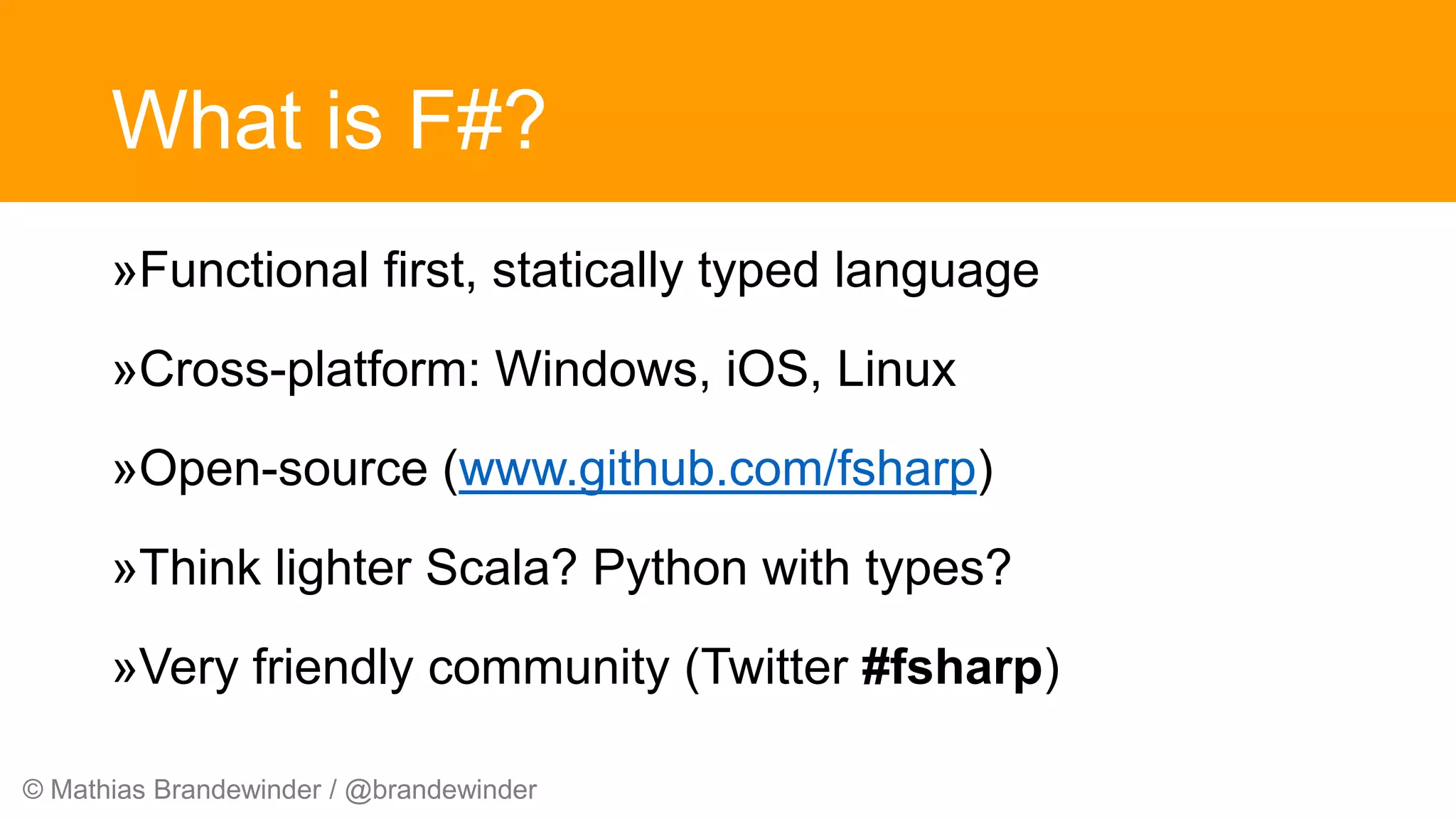
![© Mathias Brandewinder / @brandewinder
What is Machine Learning?
»"A computer program is said to learn from
experience E with respect to some class of tasks
T and performance measure P, if its performance
at tasks in T, as measured by P, improves with
experience E“ [Tom M. Mitchell]](https://image.slidesharecdn.com/machine-learning-with-fsharp-140316145926-phpapp02/75/Machine-learning-with-f-sharp-7-2048.jpg)
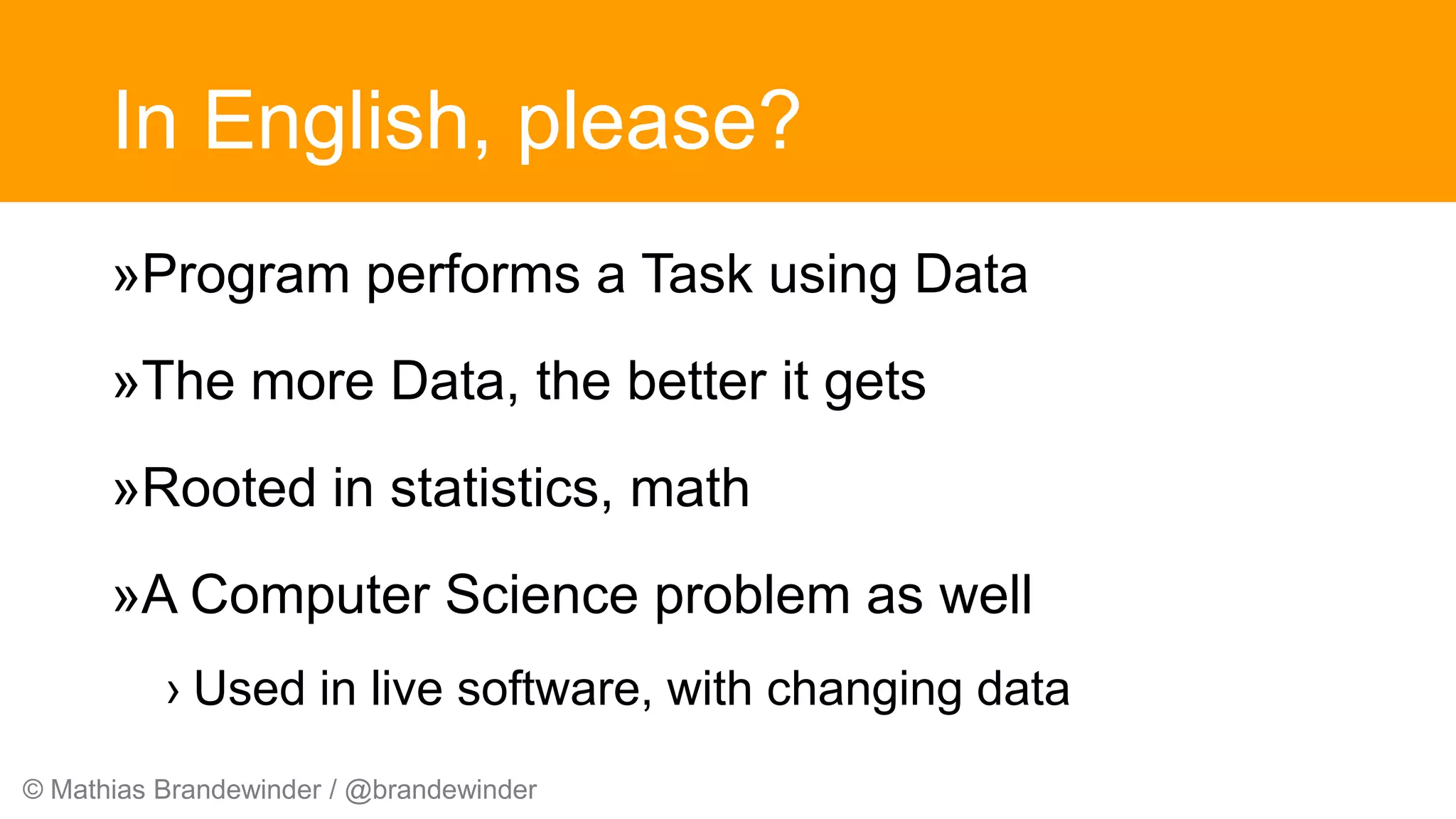
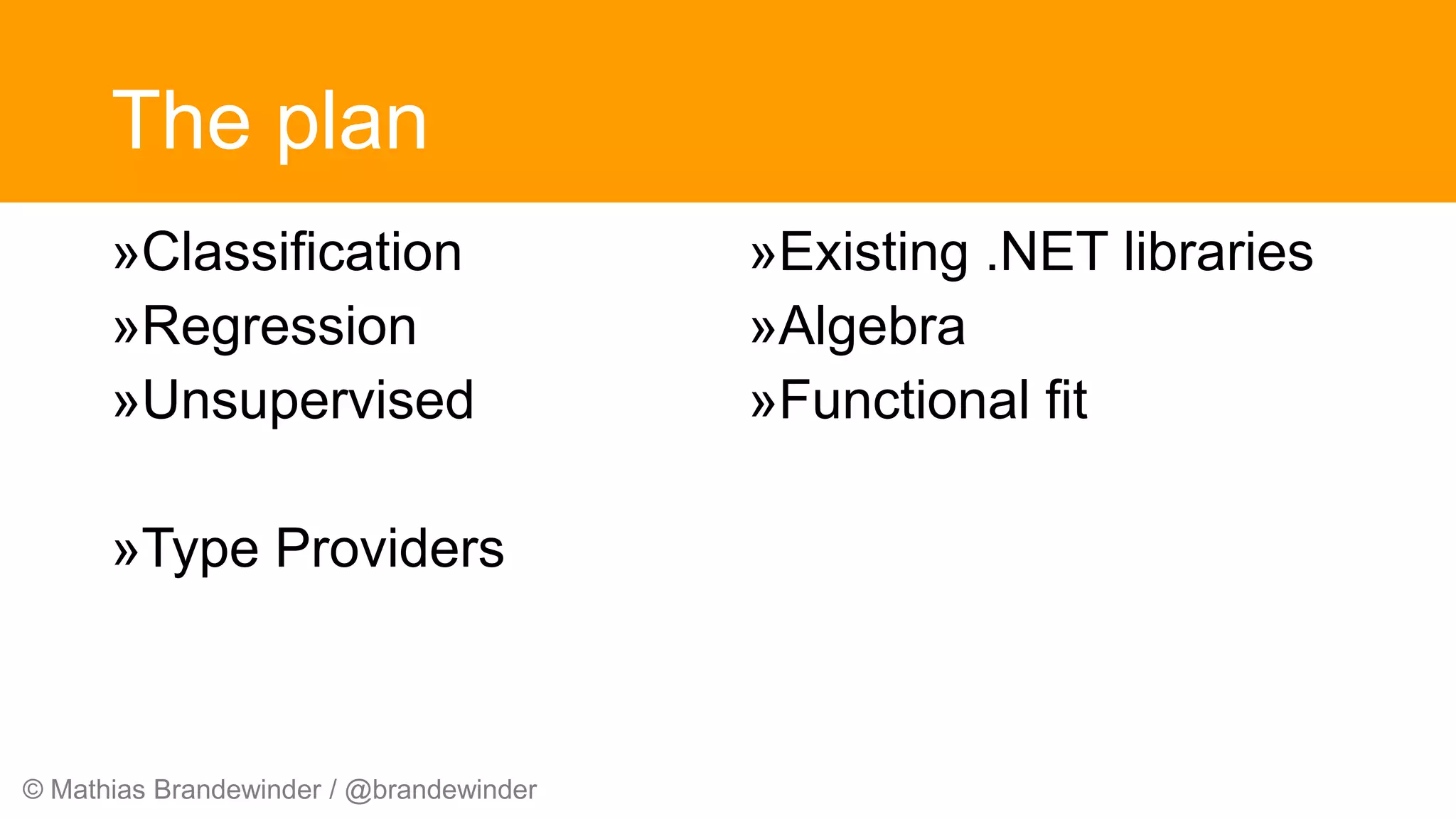
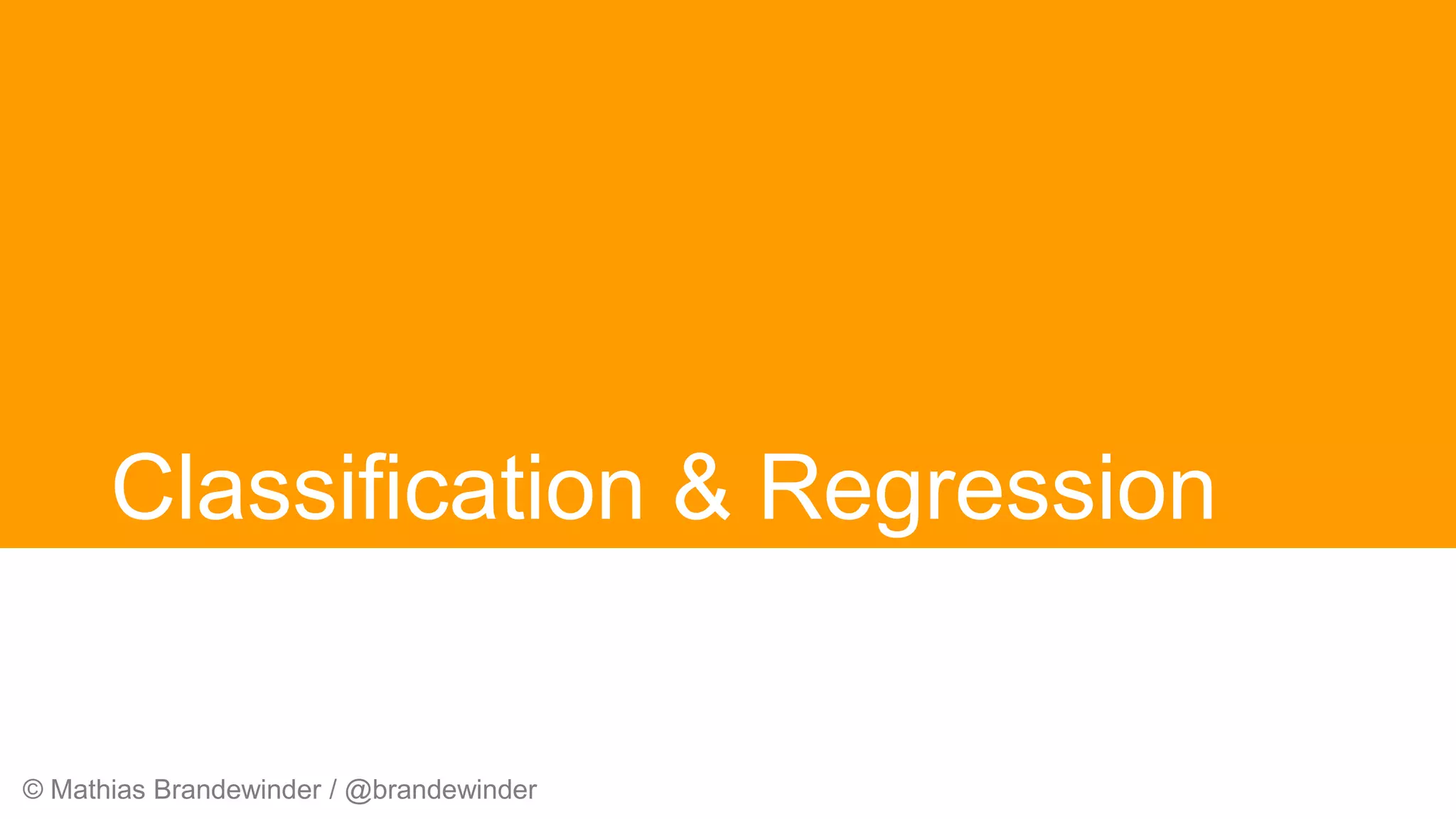
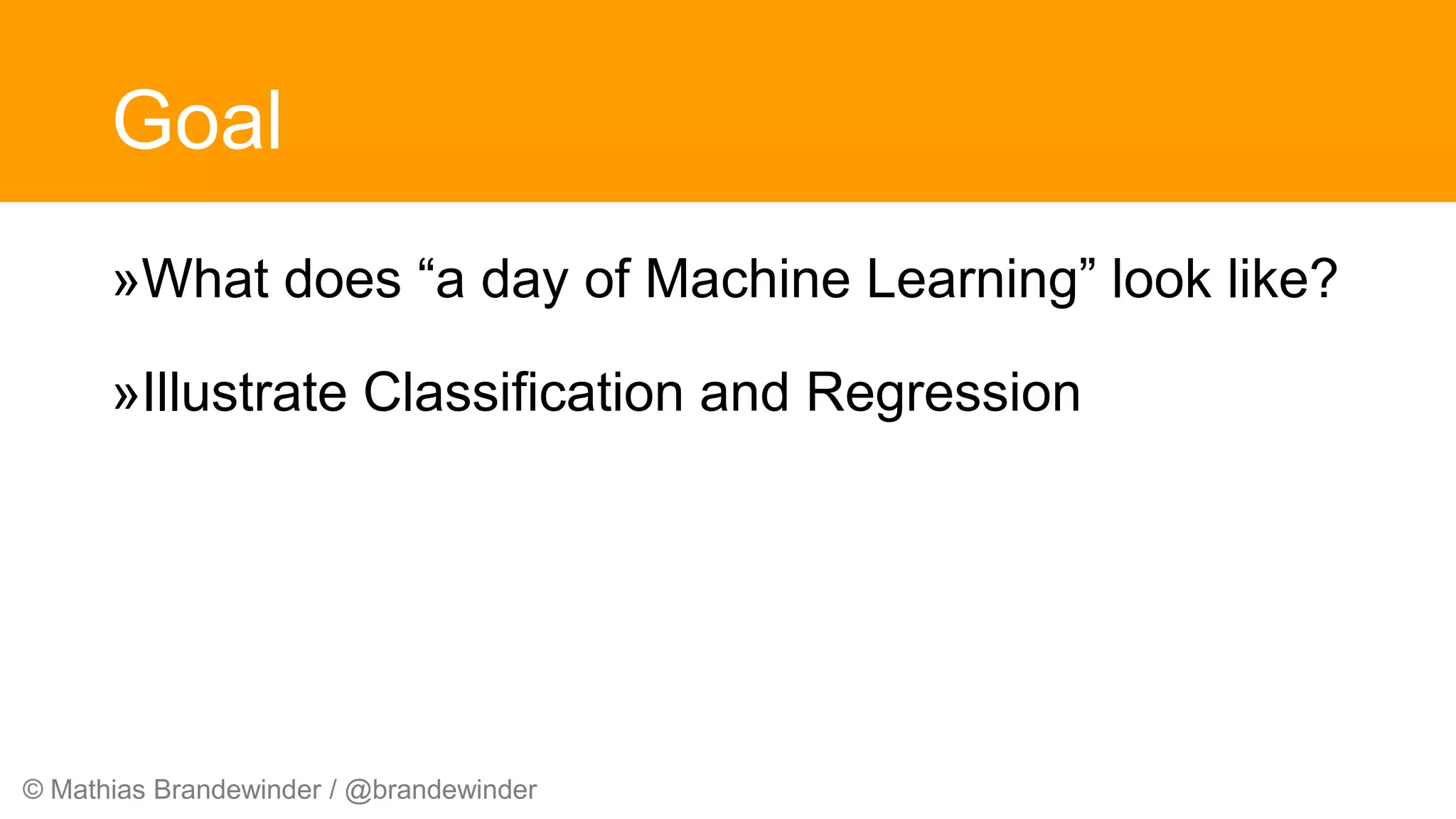
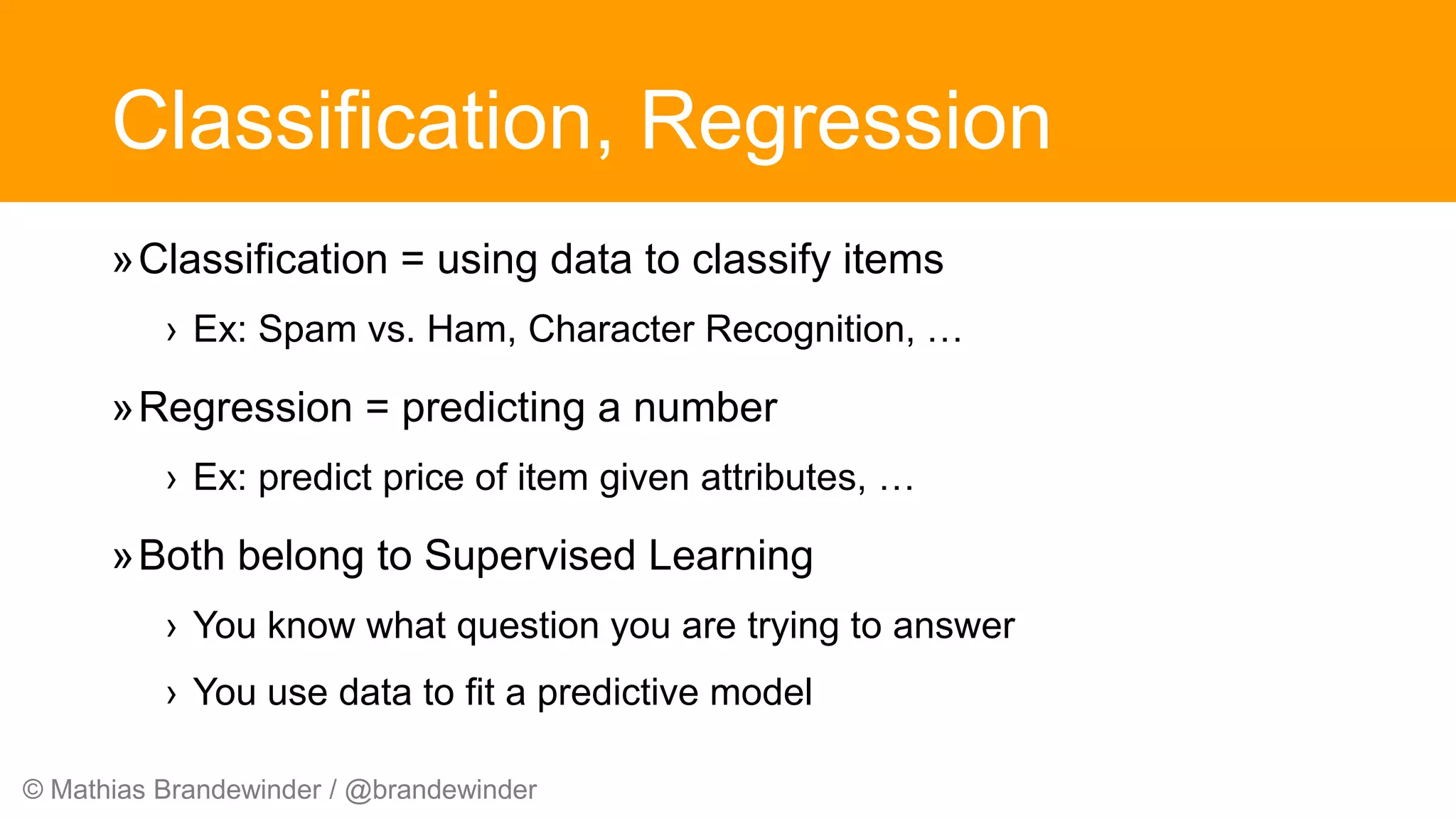
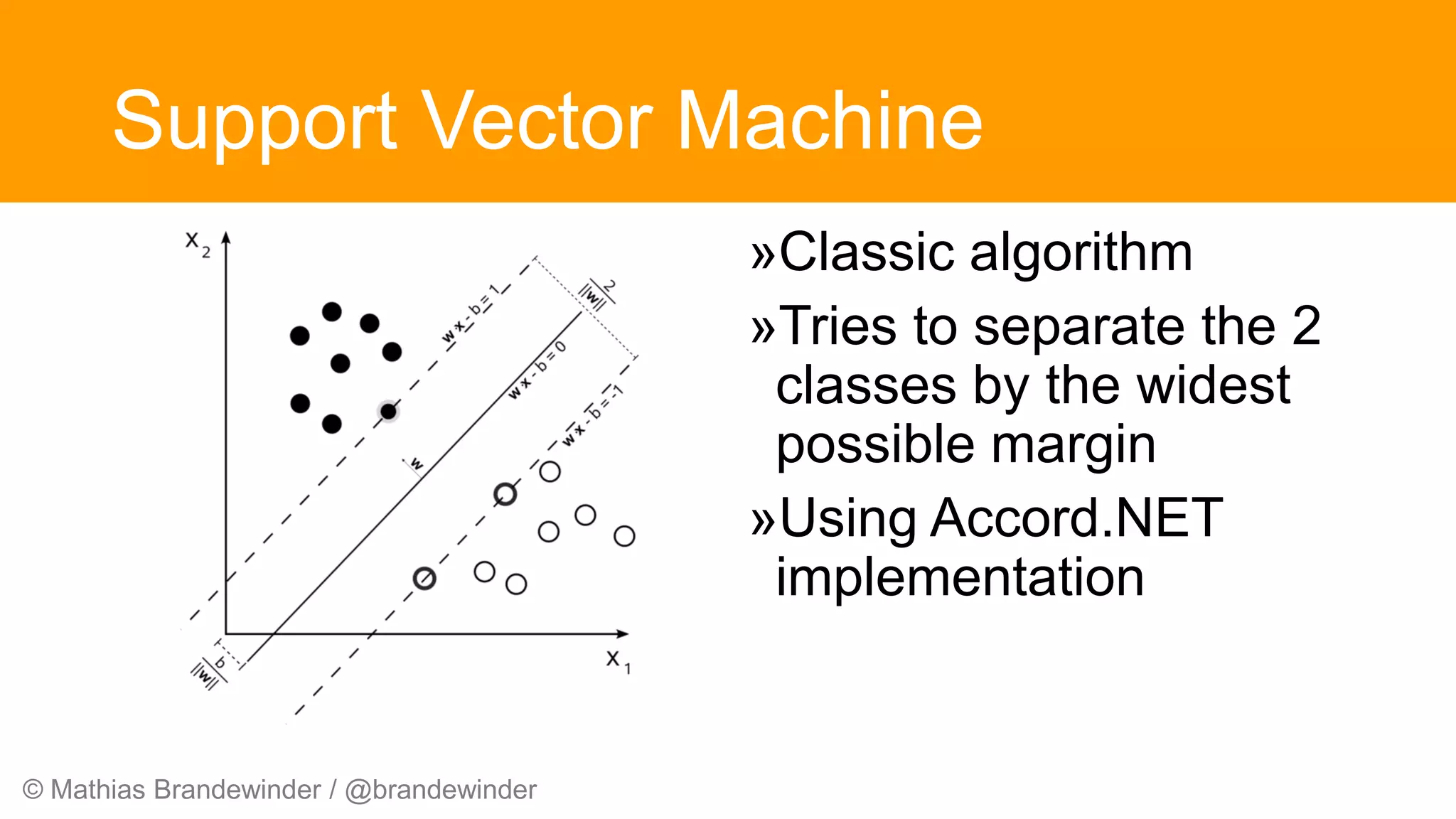
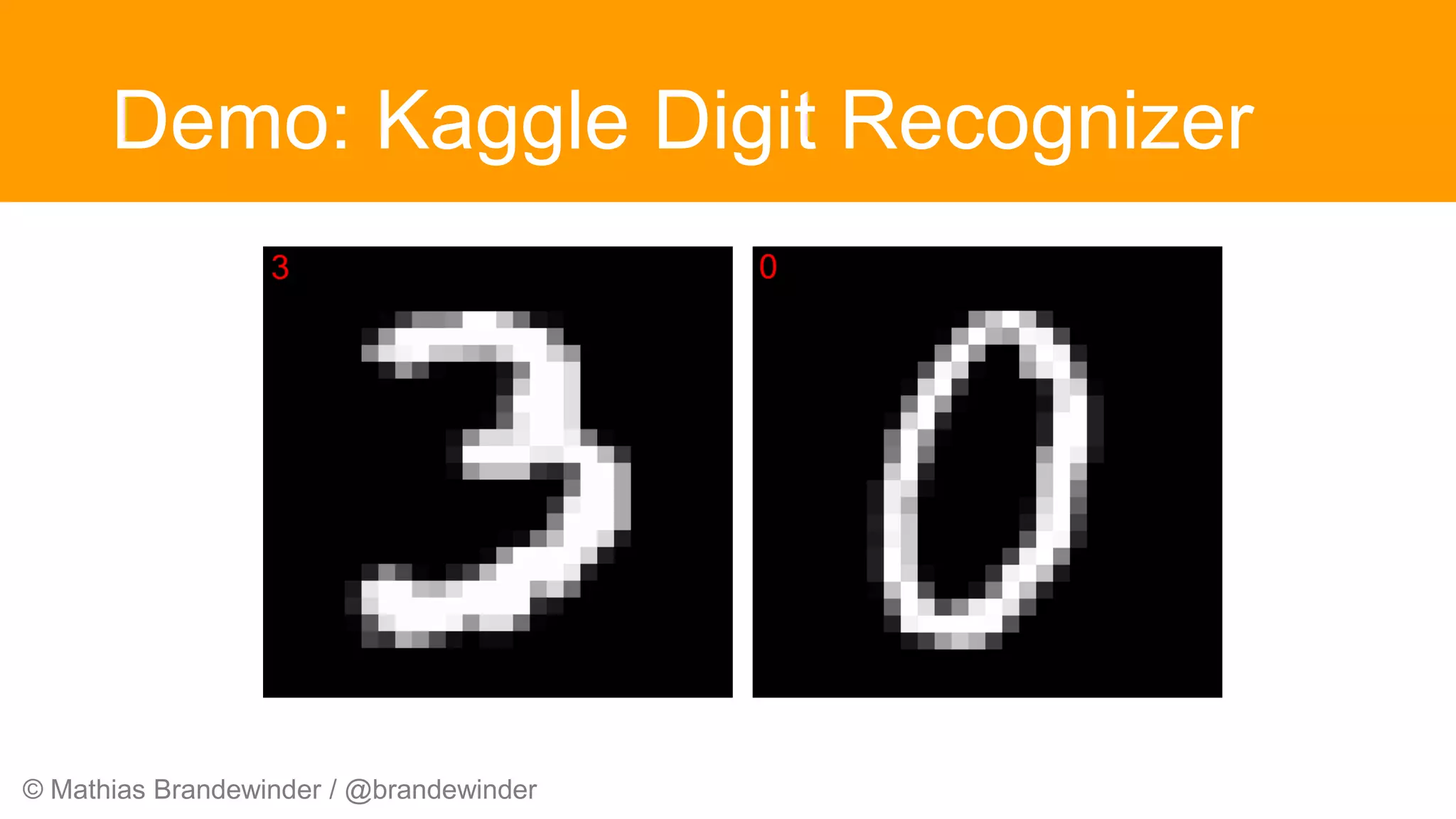
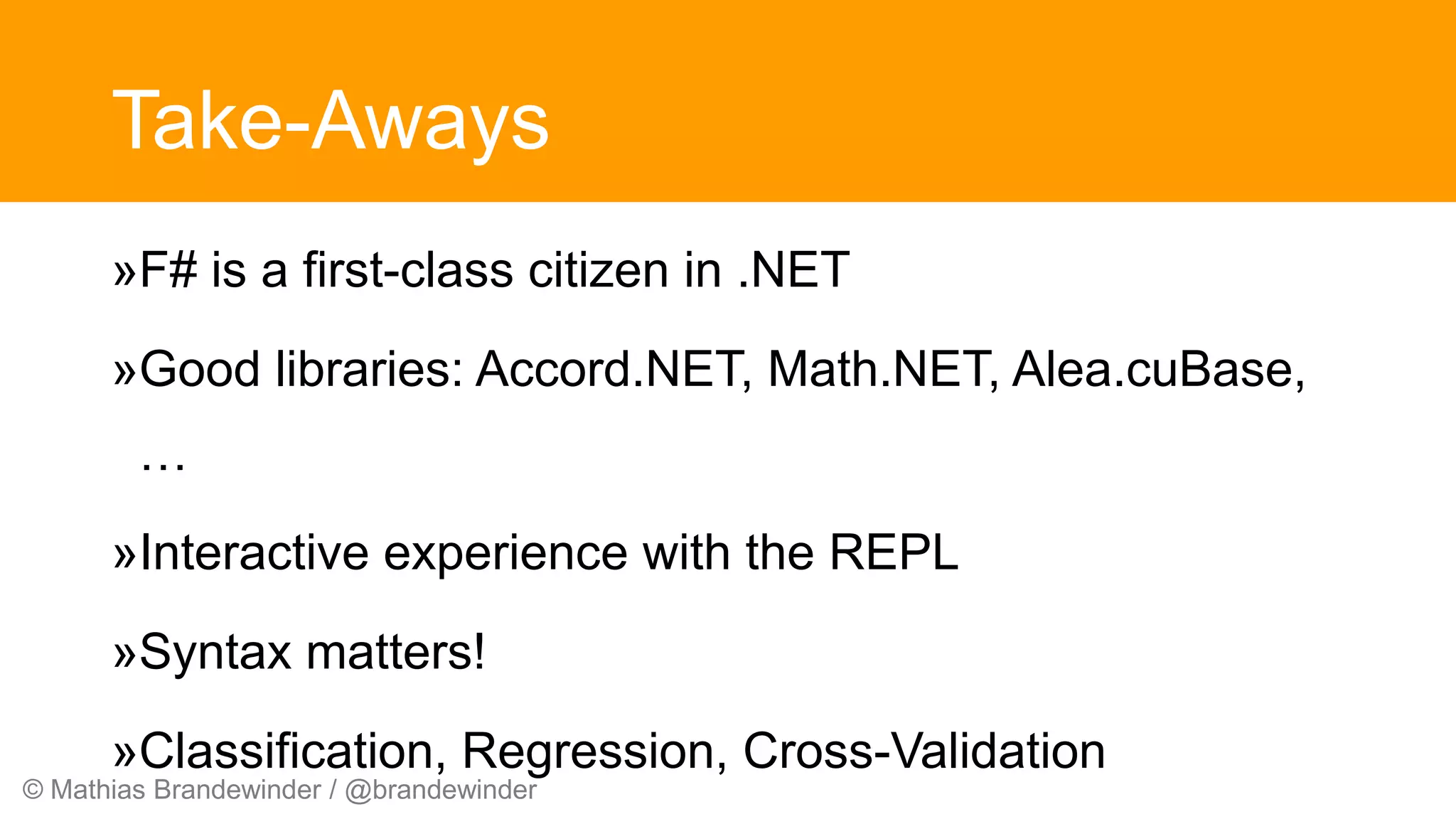

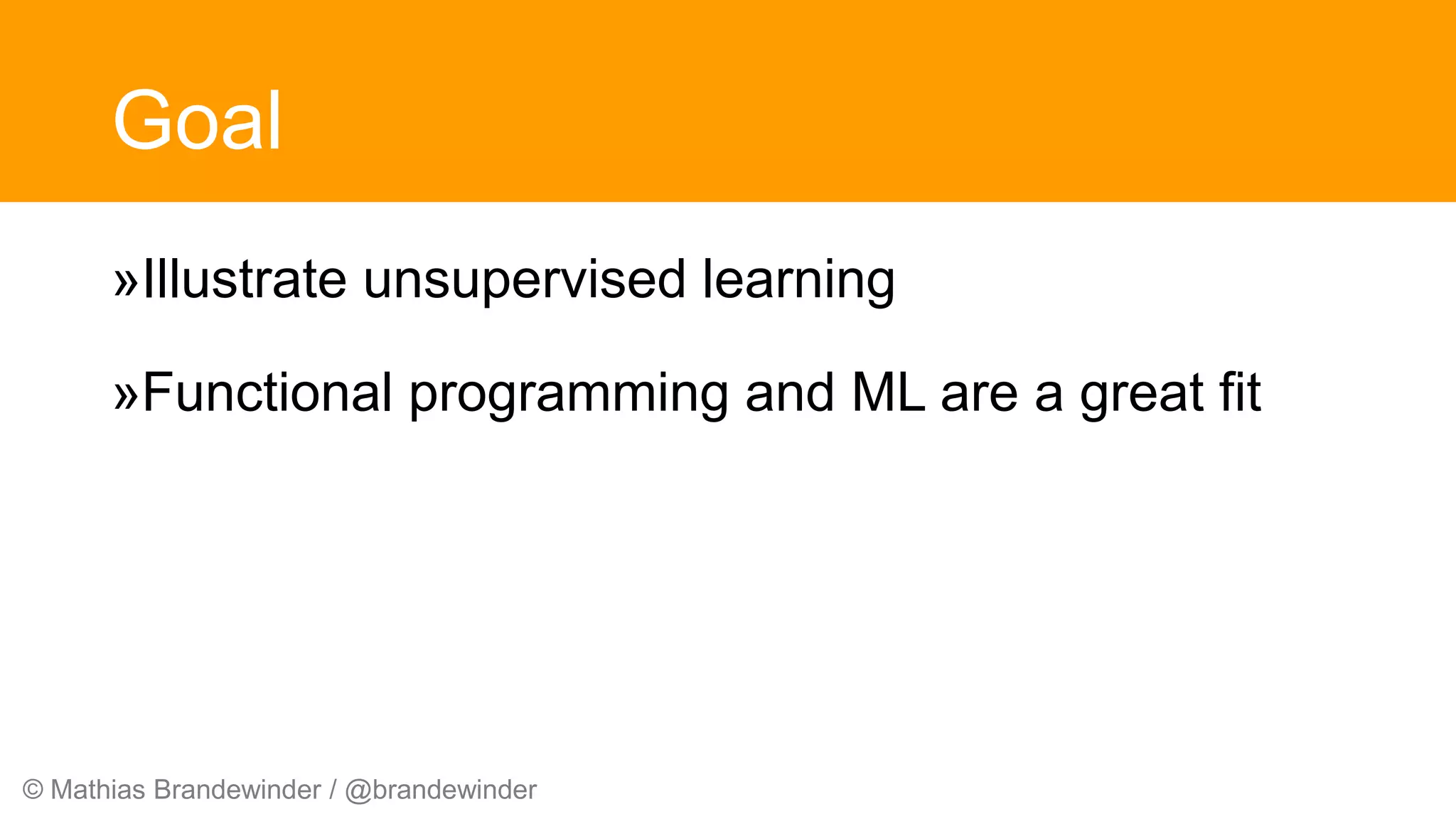
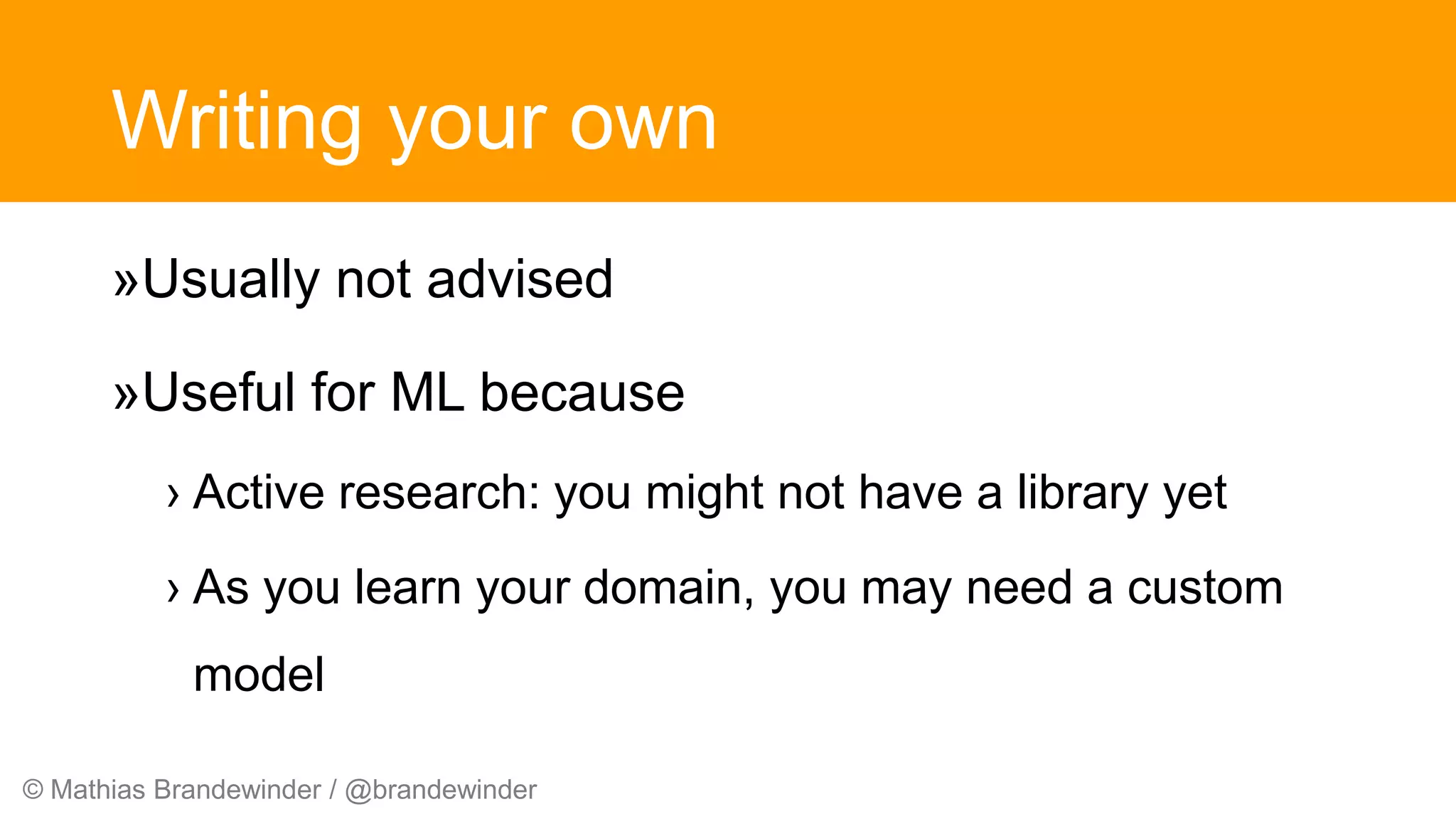
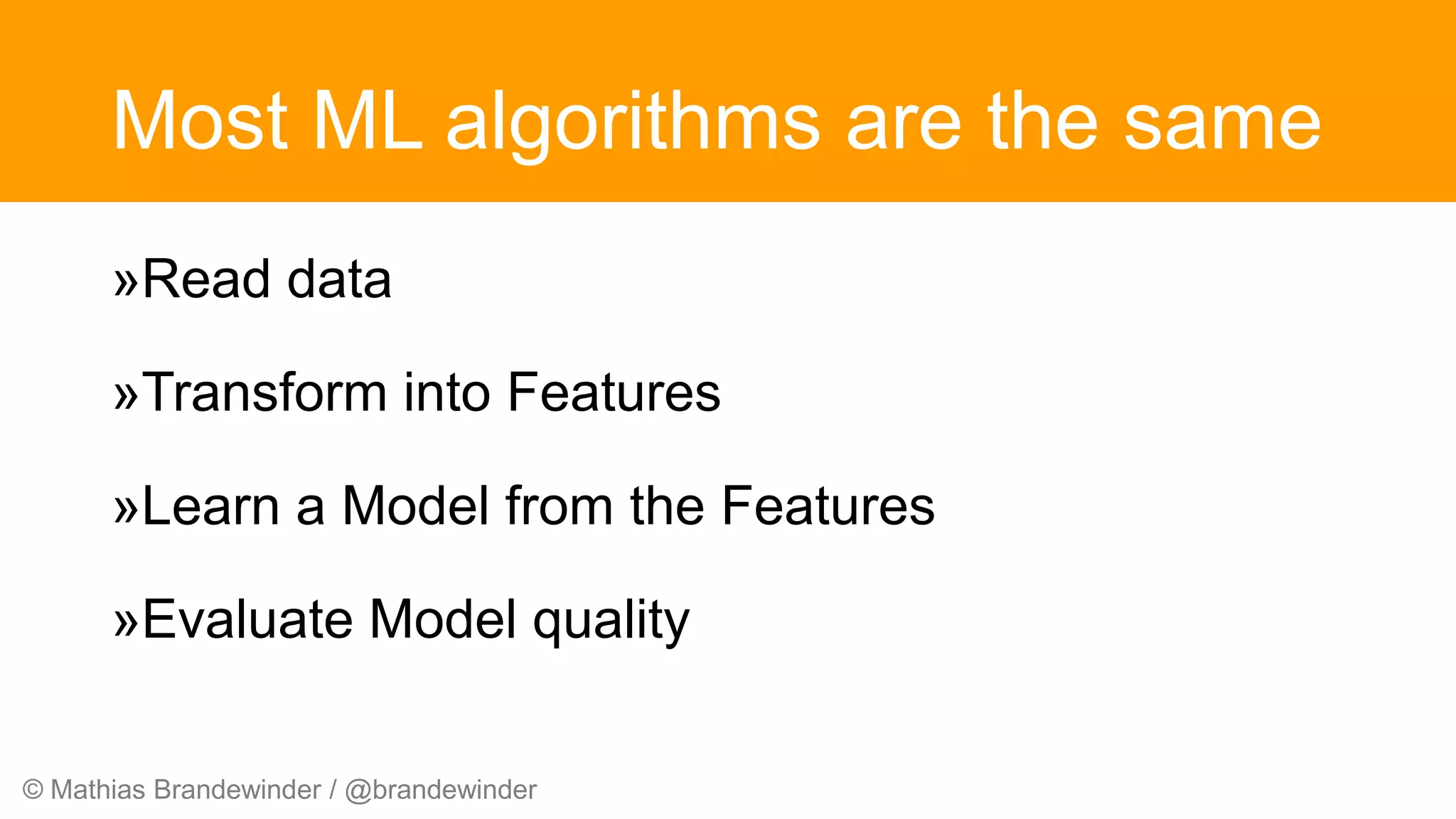
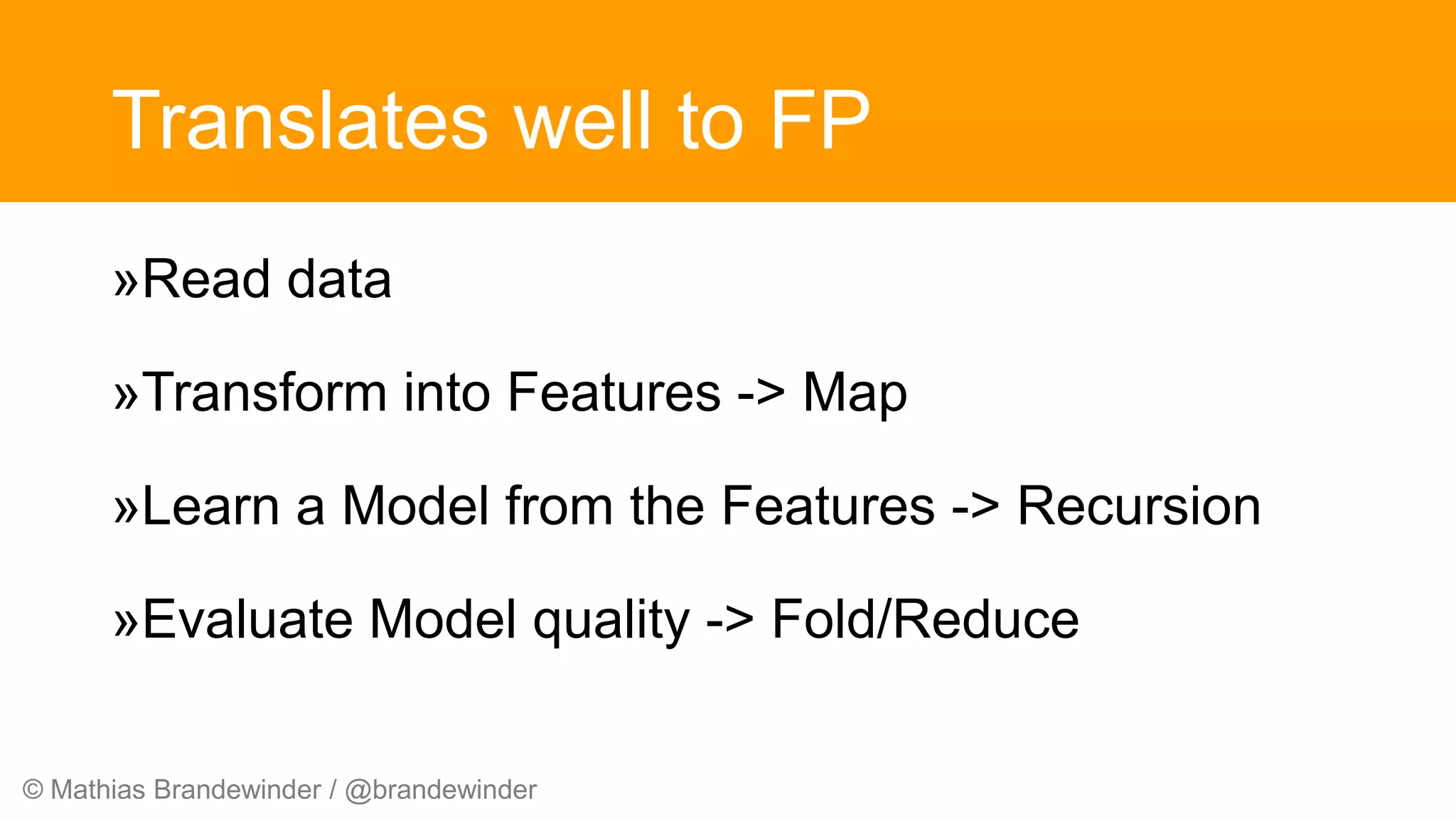
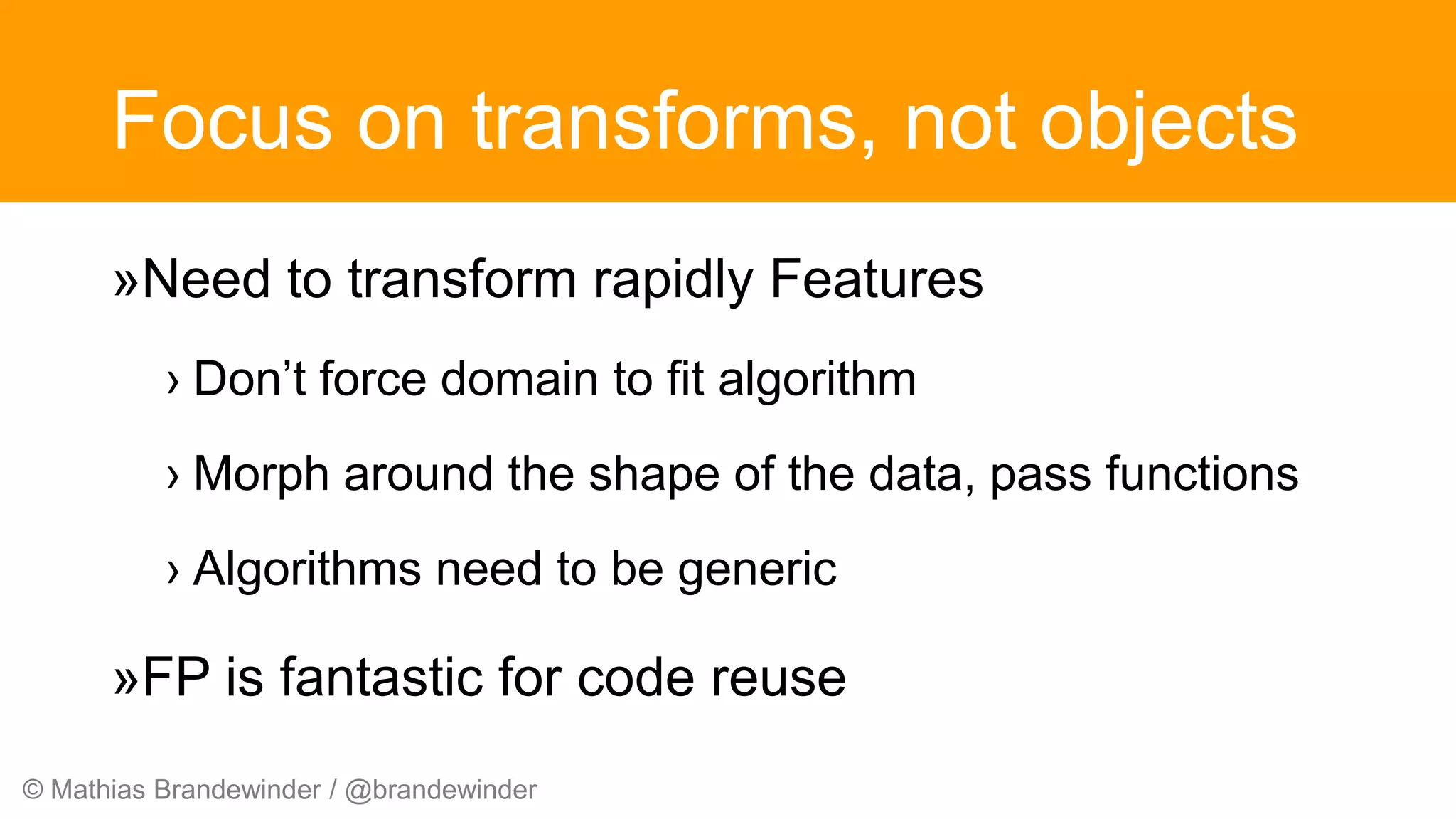
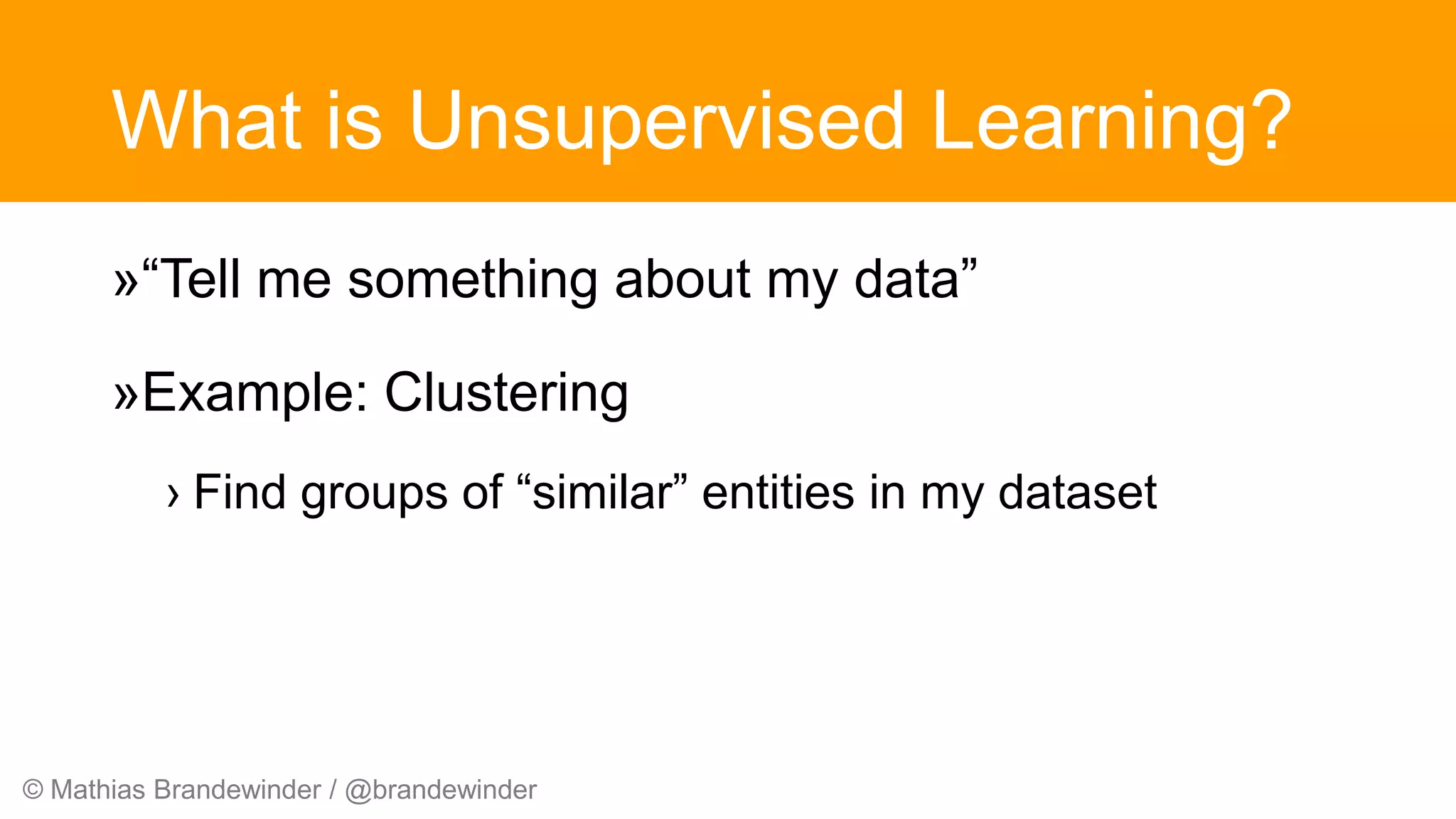
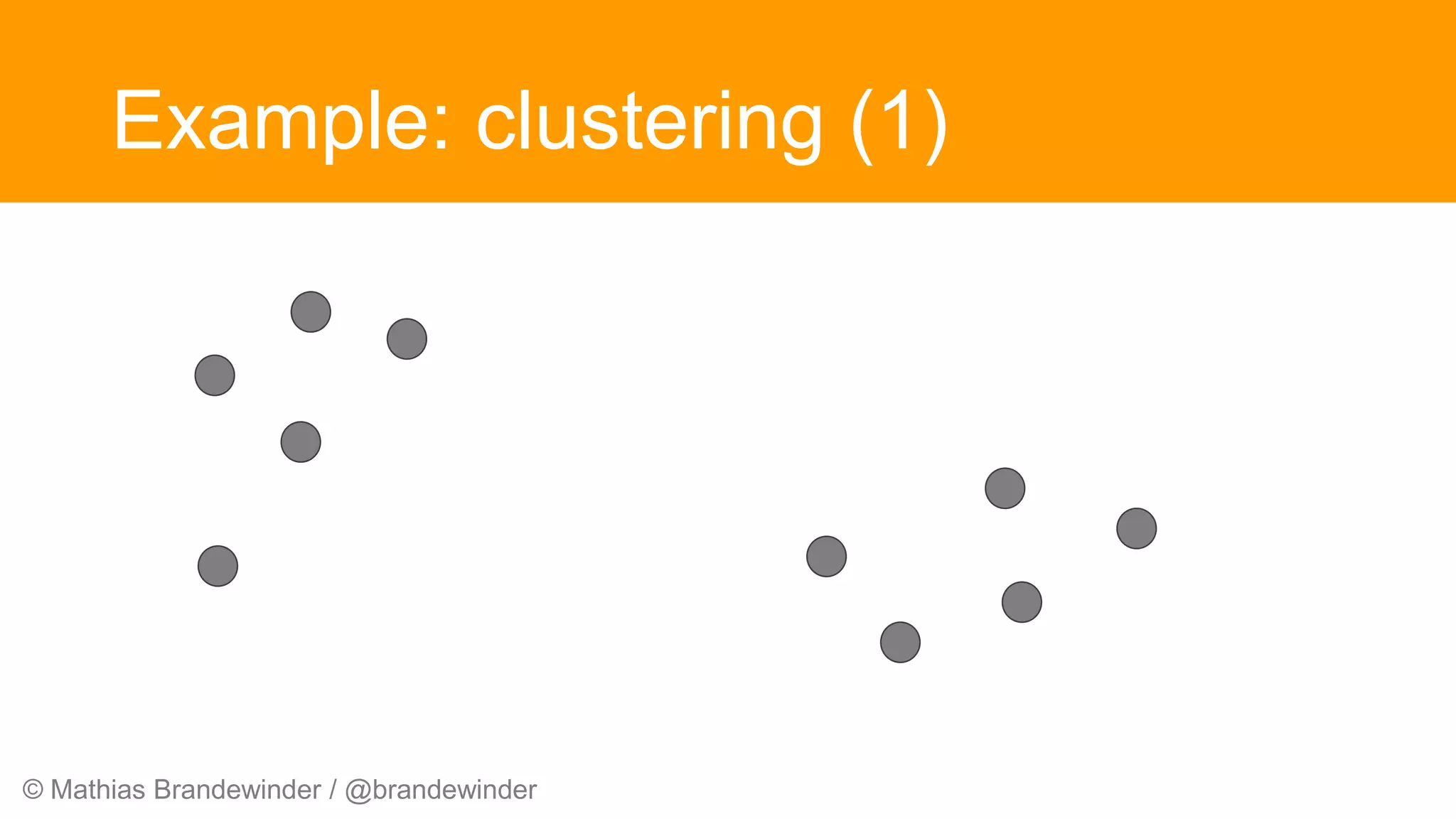
![© Mathias Brandewinder / @brandewinder
Example: clustering (2)
“Assign to closest Centroid”
[Map Distance]](https://image.slidesharecdn.com/machine-learning-with-fsharp-140316145926-phpapp02/75/Machine-learning-with-f-sharp-24-2048.jpg)
![© Mathias Brandewinder / @brandewinder
Example: clustering (3)
“Update Centroids based on Cluster”
[Reduce]](https://image.slidesharecdn.com/machine-learning-with-fsharp-140316145926-phpapp02/75/Machine-learning-with-f-sharp-25-2048.jpg)
![© Mathias Brandewinder / @brandewinder
Example: clustering (4)
“Stop when no change”
[Recursion]](https://image.slidesharecdn.com/machine-learning-with-fsharp-140316145926-phpapp02/75/Machine-learning-with-f-sharp-26-2048.jpg)
